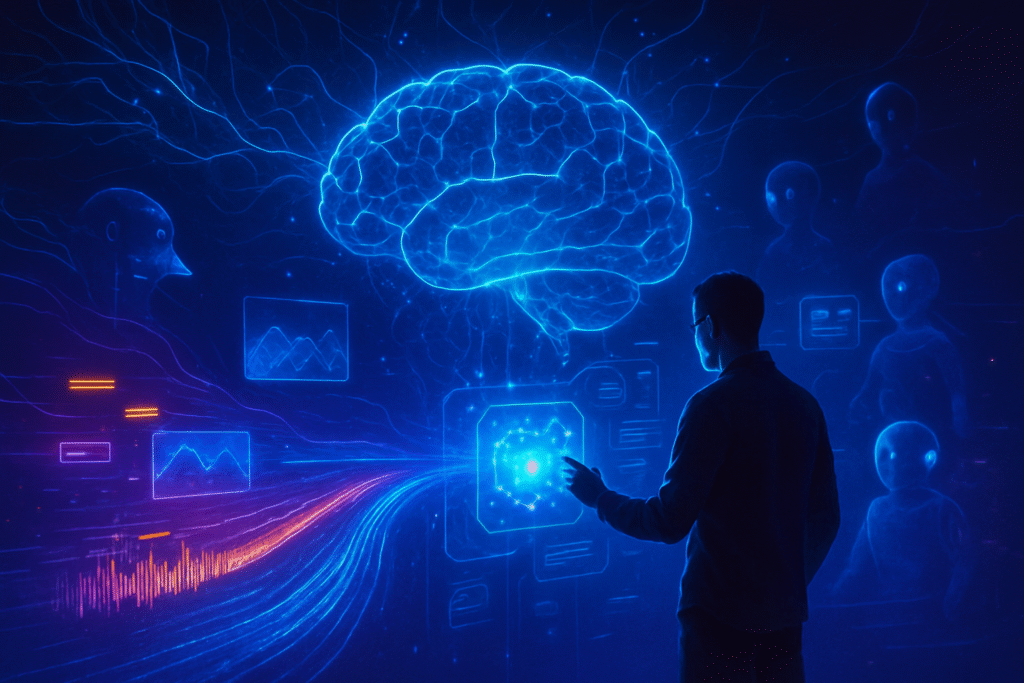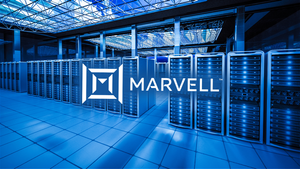
OpenAI's inaugural DevDay in November 2023 marked a watershed moment in the artificial intelligence landscape, unveiling a comprehensive suite of advancements designed to accelerate AI development, enhance model capabilities, and democratize access to cutting-edge technology. Far from incremental updates, the announcements—including the powerful GPT-4 Turbo, the versatile Assistants API, DALL-E 3 API, Realtime API, and the innovative GPTs—collectively signaled OpenAI's strategic push towards a future dominated by more autonomous, multimodal, and highly customizable AI systems. These developments, which notably excluded any discussion of an AMD chip deal, have already begun to reshape how developers build, and how businesses leverage, intelligent applications, setting a new benchmark for the industry.
The core message from DevDay was clear: OpenAI is committed to empowering developers with more capable and cost-effective tools, while simultaneously lowering the barriers to creating sophisticated AI-powered experiences. By introducing a blend of improved foundational models, streamlined APIs, and unprecedented customization options, OpenAI (OPENAI) has not only solidified its position at the forefront of AI innovation but also laid the groundwork for an "application blitz" that promises to integrate AI more deeply into the fabric of daily life and enterprise operations.
Detailed Technical Coverage: Unpacking the Innovations
At the heart of DevDay's technical revelations was GPT-4 Turbo, a significant leap forward for OpenAI's flagship model. This iteration boasts an expanded 128,000-token context window, allowing it to process the equivalent of over 300 pages of text in a single prompt—a capability that drastically enhances its ability to handle complex, long-form tasks. With its knowledge cutoff updated to April 2023 and a commitment for continuous updates, GPT-4 Turbo also came with a substantial price reduction, making its advanced capabilities more accessible. A multimodal variant, GPT-4 Turbo with Vision (GPT-4V), further extended its prowess, enabling the model to analyze images and provide textual responses, opening doors for richer visual-AI applications. Complementing this, an updated GPT-3.5 Turbo was released, featuring a 16,000-token context window, improved instruction following, a dedicated JSON mode, and parallel function calling, demonstrating a 38% improvement on format-following tasks.
The Assistants API emerged as a cornerstone for building persistent, stateful AI assistants. Designed to simplify the creation of complex AI agents, this API provides built-in tools like Code Interpreter for data analysis, Retrieval for integrating external knowledge bases, and advanced Function Calling. It significantly reduces the boilerplate code developers previously needed, managing conversation threads and message history to maintain context across interactions. While initially a major highlight, OpenAI later introduced a "Responses API" in March 2025, with plans to deprecate the Assistants API by mid-2026, signaling a continuous evolution towards even more streamlined and unified agent-building workflows.
Beyond text and agents, DevDay also brought significant advancements in other modalities. The DALL-E 3 API made OpenAI's advanced image generation model accessible to developers, allowing for the integration of high-quality image creation with superior instruction following and text rendering into applications. New Text-to-Speech (TTS) capabilities were introduced, offering a selection of six preset voices for generating spoken responses. By August 2025, the Realtime API reached general availability, enabling low-latency, multimodal experiences for natural speech-to-speech conversations, directly processing and generating audio through a single model, and supporting features like image input and SIP phone calling. Furthermore, fine-tuning enhancements and an expanded Custom Model Program offered developers increased control and options for building custom models, including epoch-based checkpoint creation, a comparative Playground UI, third-party integration, comprehensive validation metrics, and improved hyperparameter configuration. Fine-tuning for GPT-4o also became available in late 2024, enabling customization for specific business needs and improved enterprise performance at a lower cost.
Industry Impact and Competitive Landscape
OpenAI's DevDay announcements have sent ripples throughout the AI industry, intensifying competition and prompting strategic recalibrations among major AI labs, tech giants, and startups. The introduction of GPT-4 Turbo, with its expanded context window and significantly reduced pricing, immediately put pressure on rivals like Google (GOOGL), Anthropic (ANTHR), and Meta (META) to match or exceed these capabilities. Google's Gemini 1.5 and Anthropic's Claude models have since focused heavily on large context windows and advanced reasoning, directly responding to OpenAI's advancements. For startups, the reduced costs and enhanced capabilities democratized access to advanced AI, lowering the barrier to entry for innovation and enabling the development of more sophisticated, AI-driven products.
The Assistants API, and its successor the Responses API, position OpenAI as a foundational platform for AI application development, potentially creating a "vendor lock-in" effect. This has spurred other major labs to enhance their own developer ecosystems and agent-building frameworks. The DALL-E 3 API intensified the race in generative AI for visual content, compelling companies like Google, Meta, and Stability AI (STBL) to advance their offerings in quality and prompt adherence. Similarly, the Realtime API marks a significant foray into the voice AI market, challenging companies developing conversational AI and voice agent technologies, and promising to transform sectors like customer service and education.
Perhaps one of the most impactful announcements for enterprise adoption was Copyright Shield. By committing to defend and cover the costs of enterprise and API customers facing copyright infringement claims, OpenAI aligned itself with tech giants like Microsoft (MSFT), Google, and Amazon (AMZN), who had already made similar offers. This move addressed a major concern for businesses, pressuring other AI providers to reconsider their liability terms to attract enterprise clients. The introduction of GPTs—customizable ChatGPT versions—and the subsequent GPT Store further positioned OpenAI as a platform for AI application creation, akin to an app store for AI. This creates a direct competitive challenge for tech giants and other AI labs developing their own AI agents or platforms, as OpenAI moves beyond being just a model provider to offering end-user solutions, potentially disrupting established SaaS incumbents.
Wider Significance and Broader AI Landscape
OpenAI's DevDay announcements represent a "quantum leap" in AI development, pushing the industry further into the era of multimodal AI and agentic AI. The integration of DALL-E 3 for image generation, GPT-4 Turbo's inherent vision capabilities, and the Realtime API's seamless speech-to-speech interactions underscore a strong industry trend towards AI systems that can process and understand multiple types of data inputs simultaneously. This signifies a move towards AI that perceives and interacts with the world in a more holistic, human-like manner, enhancing contextual understanding and promoting more intuitive human-AI collaboration.
The acceleration towards agentic AI was another core theme. The Assistants API (and its evolution to the Responses API) provides the framework for developers to build "agent-like experiences" that can autonomously perform multi-step tasks, adapt to new inputs, and make decisions without continuous human guidance. Custom GPTs further democratize the creation of these specialized agents, empowering a broader range of individuals and businesses to leverage and adapt AI for their specific needs. This shift from AI as a passive assistant to an autonomous decision-maker promises to redefine industries by automating complex processes and enabling AI to proactively identify and resolve issues.
While these advancements promise transformative benefits, they also bring forth significant concerns. The increased power and autonomy of AI models raise critical questions about ethical implications and misuse, including the potential for generating misinformation, deepfakes, or engaging in malicious automated actions. The growing capabilities of agentic systems intensify concerns about job displacement across various sectors. Furthermore, the enhanced fine-tuning capabilities and the ability of Assistants to process extensive user-provided files raise critical data privacy questions, necessitating robust safeguards. Despite the Copyright Shield, the underlying issues of copyright infringement related to AI training data and generated outputs remain complex, highlighting the ongoing need for legal frameworks and responsible AI development.
Future Developments and Outlook
Following DevDay, the trajectory of AI is clearly pointing towards even more integrated, autonomous, and multimodal intelligence. OpenAI's subsequent release of GPT-4o ("omni") in May 2024, a truly multimodal model capable of processing and generating outputs across text, audio, and image modalities in real-time, further solidifies this direction. Looking ahead, the introduction of GPT-4.1 in April 2025 and GPT-5 in late 2024/early 2025 signals a shift towards more task-oriented AI capable of autonomous management of complex tasks like calendaring, coding applications, and deep research, with GPT-5-Codex specializing in complex software tasks.
The evolution from the Assistants API to the new Responses API reflects OpenAI's commitment to simplifying and strengthening its platform for autonomous agents. This streamlined API, generally available by August 2025, aims to offer faster endpoints and enhanced workflow flexibility, fully compatible with new and future OpenAI models. For generative visuals, future prospects for DALL-E 3 include real-time image generation and the evolution towards generating 3D models or short video clips from text descriptions. The Realtime API is also expected to gain additional modalities like vision and video, increased rate limits, and official SDK support, fostering truly human-like, low-latency speech-to-speech interactions for applications ranging from language learning to hands-free control systems.
Experts predict that the next phase of AI evolution will be dominated by "agentic applications" capable of autonomously creating, transacting, and innovating, potentially boosting productivity by 7% to 10% across sectors. The dominance of multimodal AI is also anticipated, with Gartner predicting that by 2027, 40% of generative AI solutions will be multimodal, a significant increase from 1% in 2023. These advancements, coupled with OpenAI's developer-centric approach, are expected to drive broader AI adoption, with 75% of enterprises projected to operationalize AI by 2025. Challenges remain in managing costs, ensuring ethical and safe deployment, navigating the complex regulatory landscape, and overcoming the inherent technical complexities of fine-tuning and custom model development.
Comprehensive Wrap-up: A New Dawn for AI
OpenAI's DevDay 2023, coupled with subsequent rapid advancements through late 2024 and 2025, stands as a pivotal moment in AI history. The announcements underscored a strategic shift from merely providing powerful models to building a comprehensive ecosystem that empowers developers and businesses to create, customize, and deploy AI at an unprecedented scale. Key takeaways include the significant leap in model capabilities with GPT-4 Turbo and GPT-4o, the simplification of agent creation through APIs, the democratization of AI customization via GPTs, and OpenAI's proactive stance on enterprise adoption with Copyright Shield.
The significance of these developments lies in their collective ability to lower the barrier to entry for advanced AI, accelerate the integration of AI into diverse applications, and fundamentally reshape the interaction between humans and intelligent systems. By pushing the boundaries of multimodal and agentic AI, OpenAI is not just advancing its own technology but is also setting the pace for the entire industry. The "application blitz" foreseen by many experts suggests that AI will move from being a specialized tool to a ubiquitous utility, driving innovation and efficiency across countless sectors.
As we move forward, the long-term impact will be measured not only by the technological prowess of these models but also by how responsibly they are developed and deployed. The coming weeks and months will undoubtedly see an explosion of new AI applications leveraging these tools, further intensifying competition, and necessitating continued vigilance on ethical AI development, data privacy, and societal impacts. OpenAI is clearly positioning itself as a foundational utility for the AI-driven economy, and what to watch for next is how this vibrant ecosystem of custom GPTs and agentic applications transforms industries and everyday life.
This content is intended for informational purposes only and represents analysis of current AI developments.
TokenRing AI delivers enterprise-grade solutions for multi-agent AI workflow orchestration, AI-powered development tools, and seamless remote collaboration platforms.
For more information, visit https://www.tokenring.ai/.





